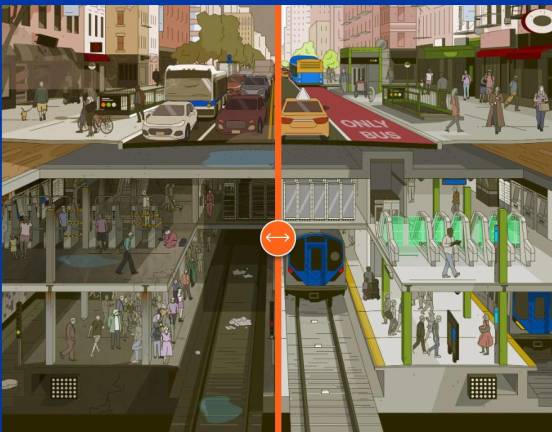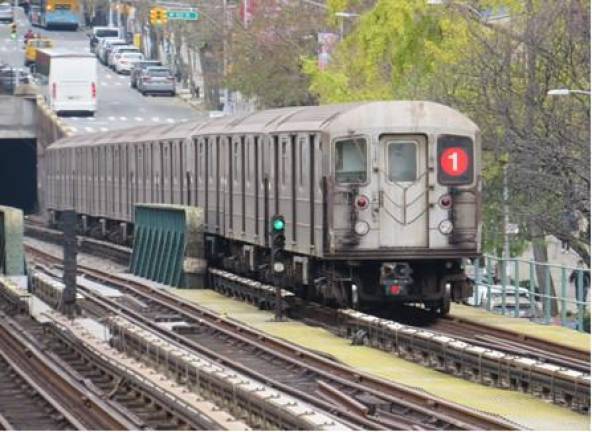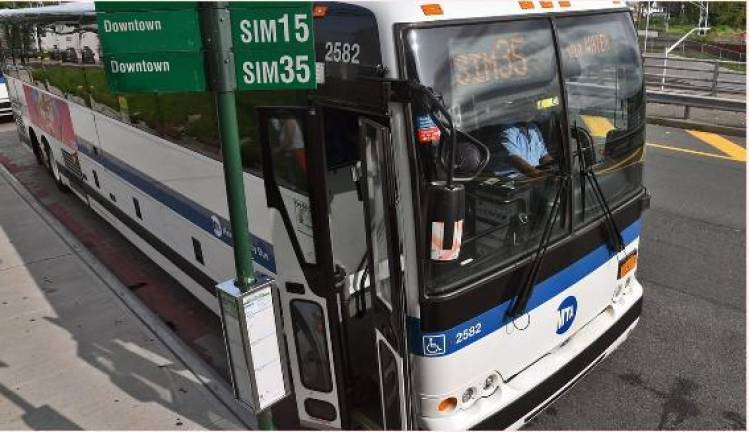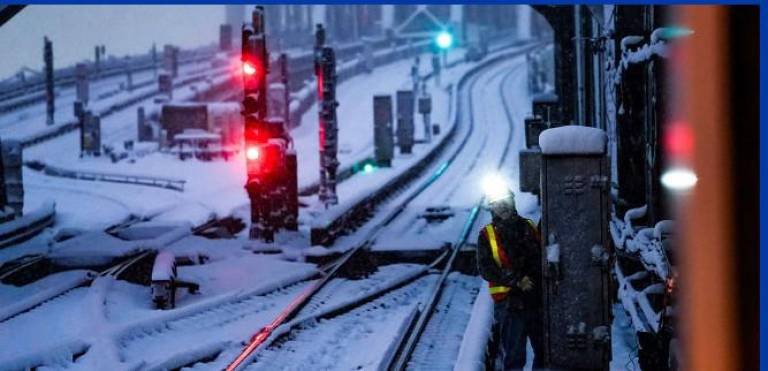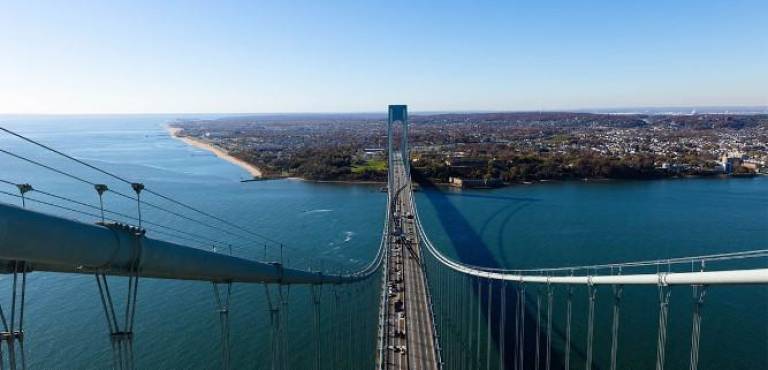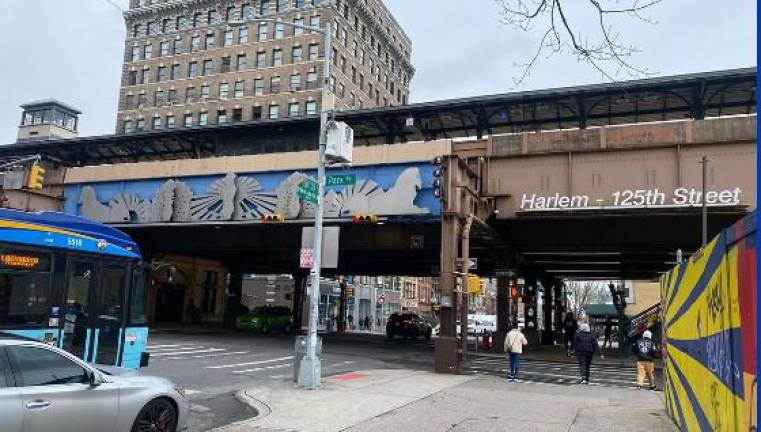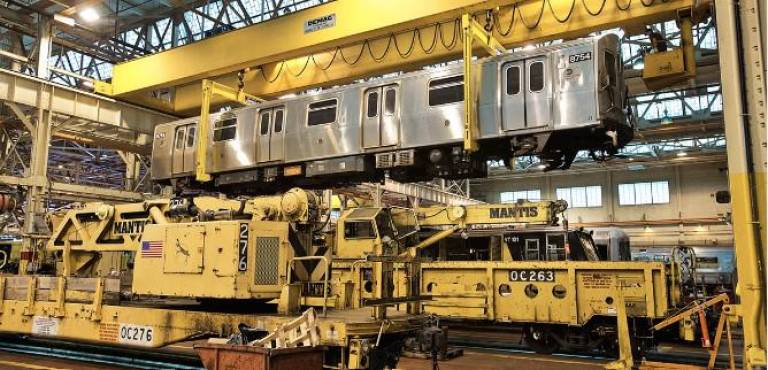MTA’s 20 Yr Plan Warns: Ignoring Needs Puts Very Survival of NYC At Risk
MTA chairman Janno Lieber and chief of construction Jamie Torres Springer outlined the agency’s new 20-year plan that they said must be rebuilt to serve 8 million riders a day over the next two decades. Without intervention, officials warned that the 100 year old transit system “could experience catastrophic breakdowns.”
MTA Chairman and CEO Janno Lieber and senior MTA officials unveiled a comprehensive 20-year needs assessment report with six million components that contains capital expenditures that it says will impact everyone within the New York Metropolitan Area that drives or uses bus or rail to get around.
“If we ignore these threats, we risk the survival of the system itself—and New York with it,” the report states. The biggest needs today are aging infrastructure, climate change and changing ridership needs.
“Today, we have assets across all categories that are in poor or marginal condition that we must address, including 21 percent of subway station components, 32 percent of Metro-North bridges, and 52 percent of LIRR substations,” the report warns. “We can’t uphold our commitment to reliable service if critical components no longer function as intended.”
The report was obviously aimed at the entire metro region, but there was a grab bag of mega projects for Manhattan:
*Expand the Second Ave subway so it stretches from Houston St. to Broadway/125th St.
*Add a Tenth Ave. stop to the #7 line.
*Make 90 percent of subway stations ADA accessible by 2044 by upgrading 490 elevators.
*Reconstruction of deteriorated structural elements under Grand Central Terminal and Park Avenue and upgrading and modernizing the 110-year old structure.
*Replacement and rehabilitation of Metro-North’s Park Avenue viaduct, with parts that date from 1890. Many more trains use it than what the structure was designed for.
In the next 20 years, the MTA hopes that it will rebuild its entire system, create additional modernization to handle capacity where it is needed most, make the system accessible to all, and accelerate the fight against climate change.
The report was criticized in some quarters because it did not affix cost estimates to the ambitious projects it hopes to undertake. Andrew Rein, president of the Citizens Budget Commission, told Crain’s New York Business that the lack of dollar amounts “is a real failure in transparency that stops all stakeholders from having a sense of what it takes to bring the system to a state of good repair. If we don’t have a sense of those dollar figures, and a sense of the impact on service if that is or is not done, then we can’t have a discussion about the trade-offs,” he added. “We just can’t.”
MTA Chairman and CEO Janno Lieber said, “Instead of matching needs to some pre-approved budget, this detailed evaluation tells the whole story, laying bare the urgent need for renewal and improvement of the system’s existing infrastructure and to prepare for climate change.”
The report, entitled The Future Rides With Us, is the first time in the history of the 43-year old agency that such a comprehensive report has been tackled.
The completion of the 150-page document took hundreds of MTA staffers two years to compile. To underscore the needs, officials pointed out that during the range of the plan from 2025-2044, both the Subway and Metro-North components will turn 125, the Long Island Rail Road will be 200, and the MTA Bridges and Tunnels will see 100.
With 400 miles of the subway either underground or below street level and 50 percent of Metro-North’s Hudson Line affected by torrential flooding and coastal surges, better protection must be implemented. Since COVID, ridership patterns have changed, affecting operational and staffing capabilities. As an example of aging infrastructure, 75 percent of subway electrical substations are over 50 years old, just one of the many funding needs to keep the MTA going.
Climate change is a looming threat. Torres-Springer said the Hudson line of Metro North which runs into Grand Central is particularly vulnerable to rising sea levels since it runs so close to the Hudson River north of the city.
The MTA said since Superstorm Sandy in 2012 it has invested $7.6 billion in climate resiliency projects. While the new plans look forward all the way to 2044, not everyone is pleased with the MTA’s past performance with climate change. New York State Comptroller Thomas DiNapoli has taken issue with the MTA’s plan for subway climate change hardening.
“The MTA is getting a large infusion of federal infrastructure funds, but its long-term finances are still in trouble as it wrestles with an overdue list of repairs and upgrades and growing debt,” DiNapoli said. “It needs to reassess and focus its priorities to get money where it is most needed to restore the system and bring riders back. Protecting against the growing threat of climate change must also be among its top priorities because climate change threatens all aspects of our regional transit system.”
Among the criticsms from DiNapoli:
*Subway flooding is increasingly disruptive and destructive, yet since 2015 the MTA has only spent $56 million on pump rooms and other line equipment with another $189 million committed, out of the $1.7 billion called for in the needs assessment for 2015 through 2024.The MTA said it needed to invest $4.9 billion in new subway cars from 2015 through 2024, but it only spent $700,000 on subway car projects since 2015. It did order 460 subway cars during its 2015-2019 capital program—to replace those over 40 years old and prone to break downs—but the new cars are not expected until 2025, DiNapoli’s report stated.
*The MTA has spent just half of the $3.4 billion it said it needed to replace buses and keep fleets in good working order.
*Upgrading antiquated subway signals was the top priority for long-term capital needs in the last assessment, DiNapoli said. “The signals overhaul—budgeted at $8.7 billion through 2024—was needed to resolve signal malfunctions that regularly disrupted service and to address overcrowding by allowing trains to run closer together. MTA has completed only $900 million in signals work through Sept. 2021,” the comptroller stated.
MTA officials present stressed that the needs over twenty years will be broken down into five-year intervals, a more realistic way to obtain funding, a portion of which would come from congestion pricing revenues; under the current capital funding program, when congestion pricing comes into effect, $1 billion will come from this new revenue stream to pay for a total $15 billion of yearly funding, Future contributions will be part of the first five-year capital budget is due in 15 months, a relatively short timeline.
“In our vision of the future, we will bring riders back to transit and we will build for the future,” the MTA 20 year plan states. “We will accommodate our region’s expected jobs and population growth of over 1 million in the next 20 years. In this vision, we will serve more than 8 million daily riders.”
“In our vision of the future, we will bring riders back to transit and we will build for the future. We will accommodate our region’s expected jobs and population growth of over 1 million in the next 20 years. In this vision, we will serve more than 8 million daily riders.” MTA’s Future Rides With Us report
